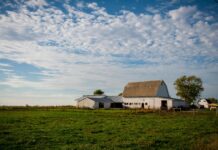The songbird activity in my backyard over the past couple of weeks is a clear indication that spring is here. I’ve seen twice as many birds at my feeders and a wider variety of species hanging around.
For the next six weeks, birders will be able to enjoy the increased activity as migratory bird species return to their breeding grounds. Some of these species are just passing through and others will hang around all summer long if they’re given the right conditions.
Songbirds are favorites for many birders, not just for their beautiful and distinct songs, but also because many species have vibrant and colorful feathers. Gardeners love songbirds because they disperse seeds, pollinate plants and consume tons of insects throughout the summer.
There are plenty of reasons to attract songbirds to your backyard, but perhaps, the most important reason isn’t even for you. Songbird populations have declined in recent years due to habitat loss, climate change, pesticide use, collisions with windows and other human-related interactions. Making your backyard more friendly, and creating a space for songbirds will help conserve at-risk species and ensure you have visitors all summer long.
Gardening for songbirds
When creating an outdoor space for wildlife, you need to provide sources of food and clean water, cover or shelter and places to raise young. Incidentally, a good mix of native plants and a small fountain can meet all of the needs of your backyard songbirds.
Trees. The following native Ohio trees provide food, cover and nesting sites for songbirds.
- Boxelder
- Black Maple
- Red Maple
- Silver Maple
- Ohio Buckeye
- Shagbark Hickory
- Mocknut Hickory
- Hackberry
- Flowering Dogwood
- American Beech
- Red or Green Ash
- Mountain Ash
- Honeylocust
- Common Juniper
- Eastern Red Cedar
- Sweetbay Magnolia
- Red Mulberry
- White Pine
- Eastern Cottonwood
- Black Cherry
- Wild Red Cherry
- Common Chokeberry
- White Oak
- Scarlet Oak
- Red Oak
- Black Oak
- Canadian Yew
- American Basswood
- Blackgum
- Crabapple
- Sassafras
- American Holly
- Birch trees
- Tulip trees
Shrubs. The following native Ohio shrubs provide food, cover and nesting sites for songbirds.
- Black Chokecherry
- Cockspur Hawthorn
- Thicket Hawthorne
- Washington Hawthorn
- Dogwood – Silky, Pagoda and Grey
- Burning Bush
- Running Strawberry Bush
- Common Winterberry
- Spicebush
- Smooth Sumac
- Elderberry
- Maple-leaf Viburnum
- Arrowwood
- Nannyberry
- Blackhaw Viburnum
- Highbush Viburnum
- Cranberry
- Blackberry
- Hazelnut
Vines. The following native Ohio vines provide food for songbirds.
- Wild grapes
- Bittersweet
- Greenbrier
- Woodbine
Wildflowers. The following native Ohio wildflowers provide food for songbirds.
- Black-eyed Susan
- Purple Cone Flower
- Oxeye Sunflower
- Smooth Blue Aster
- Bee Balm
- Cardinal Flower
- Columbine
- Hibiscus
- Butterfly Weed
- Trumpet Vine
- Bell Flower
- March Marigold
- Phlox
- Goldenrod
- Tickseed
- Milkweed
- Wild Geranium
- Blue Vervain
- Thistle
Planting native trees, shrubs, vines and wildflowers will improve the ecosystem in your backyard not just for songbirds, but for wildlife as a whole. Native plants attract beneficial insects, which provide even more food for songbirds and keep your garden healthy. They also help gardeners conserve water and reduce garden maintenance.
Other tips
Incorporating native plants in your landscape is vital to attract more birds to your feeders, backyard and garden. These additional tips will also make your yard more attractive to songbirds and help keep them safe:
- Keep feeders and other food sources out in the open away from places predators might hide.
- Don’t use pesticides in your yard or garden.
- Provide nesting sites. These can come in the form of nesting boxes, birdhouses or dense shrubs or trees that provide safe places for songbirds to raise their young.
- Keep your bird bath or fountain clean. In areas where a lot of birds come together to share resources, there’s a greater chance for them to transmit disease. You should also clean your feeders regularly, as well.
- Prevent window collisions by putting screens or tape on any large windows that are very reflective or have caused collisions in the past.
- Reduce light pollution, especially during migration periods. Songbirds can have a difficult time navigating in areas with excess light pollution, causing them to get lost or burn vital calories.
- Trim trees during fall and winter. Remember, from April to November do not dismember. It’s better for the trees and prevents the spread of disease, but it also helps ensure you’re not disturbing any songbirds who’ve already made nests in tree branches you may intend to trim.










